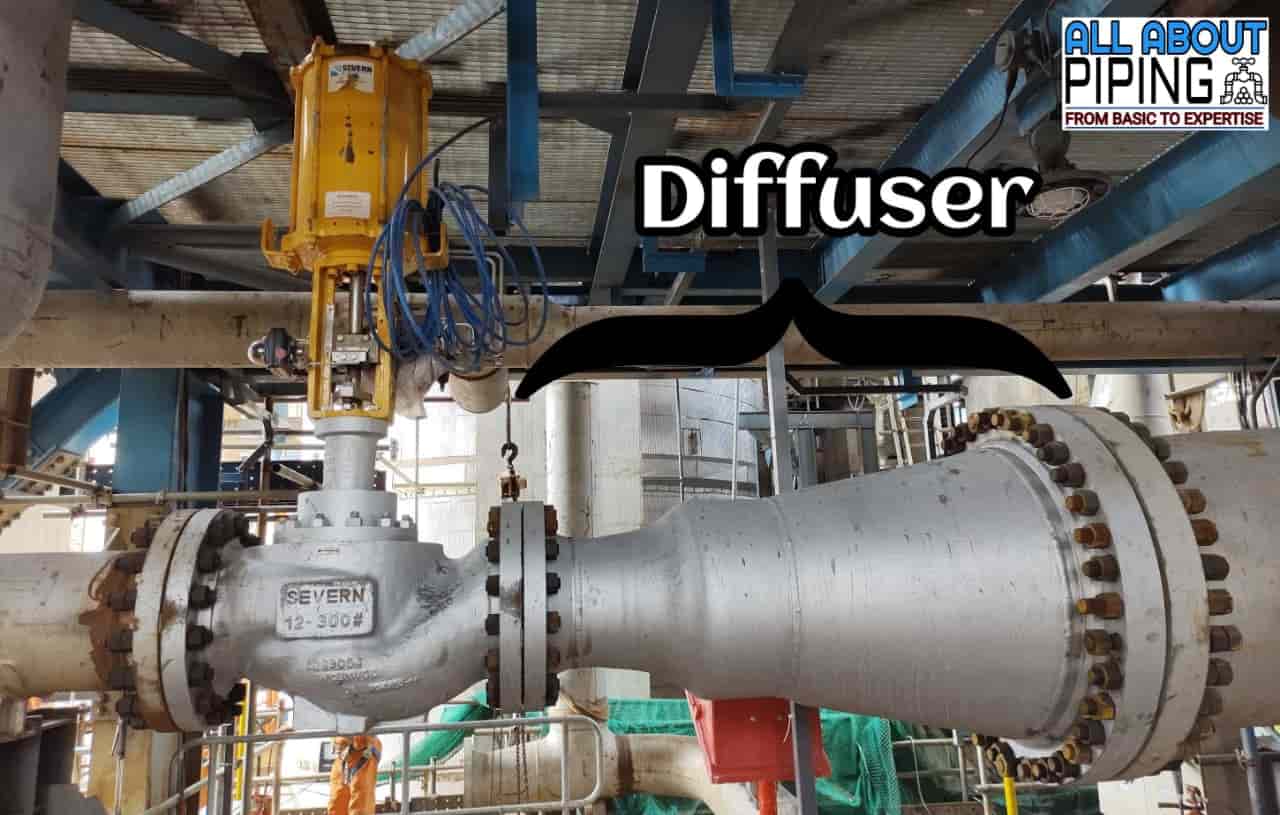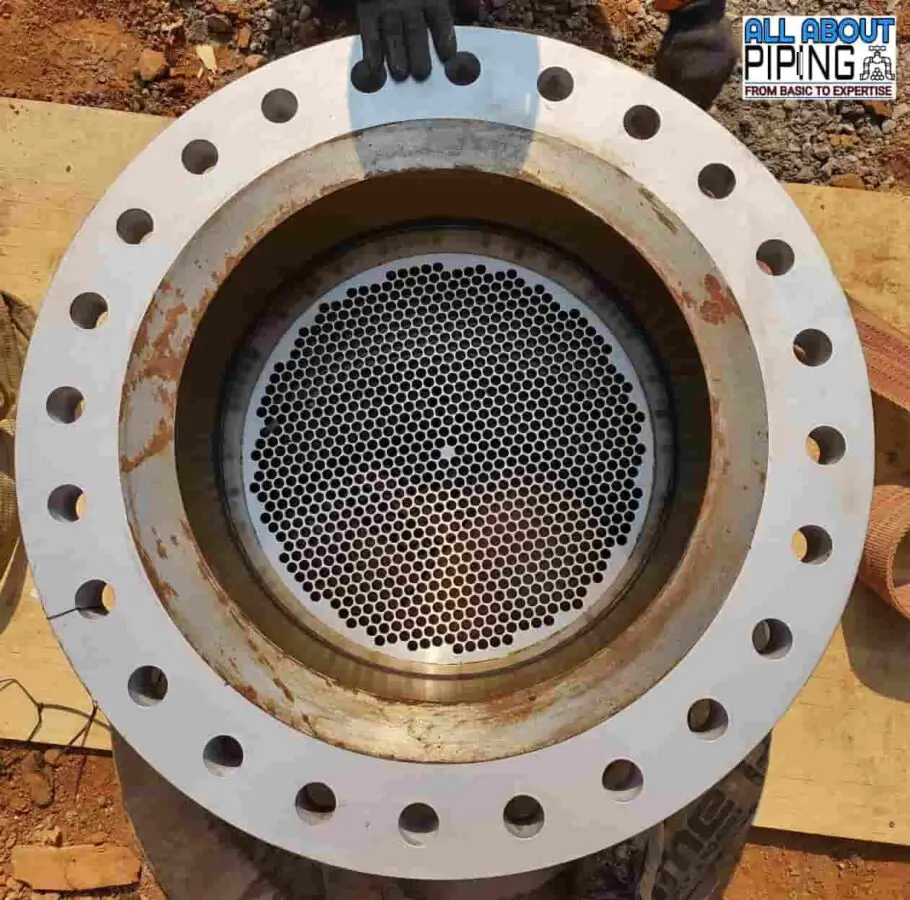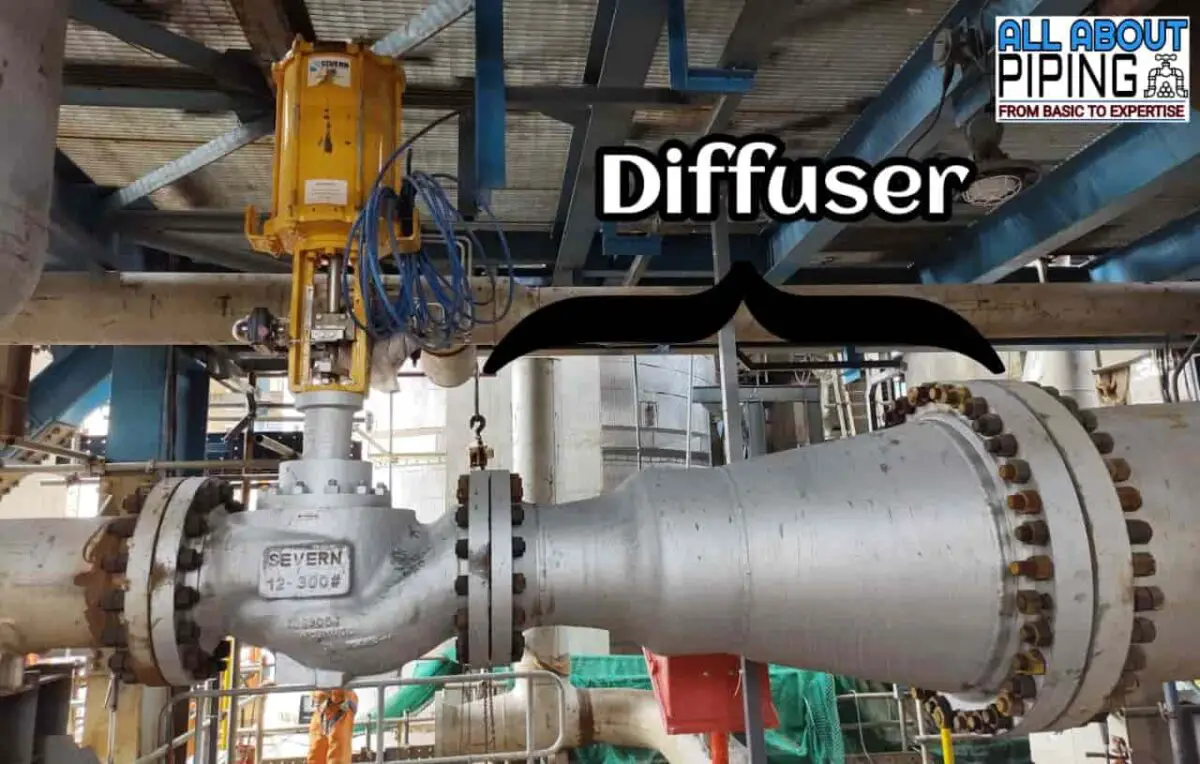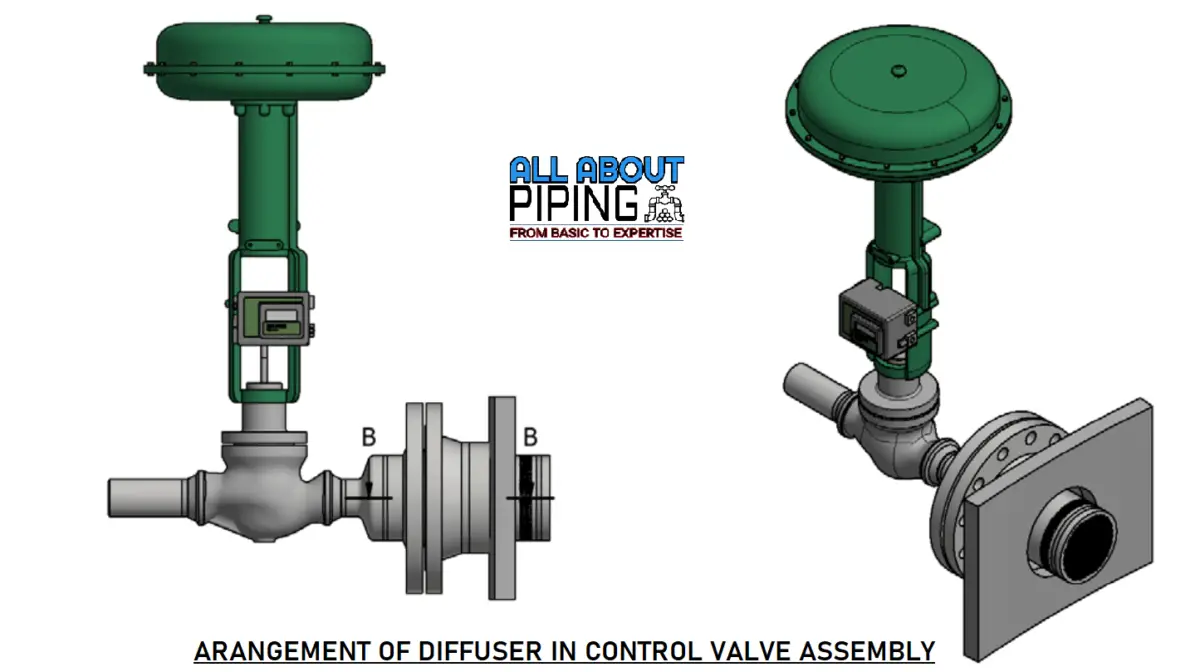Operation of Control valves frequently goes with the generation of high-level noise. For reducing noise and vibration pressure reduction is a method. For this, we install some devices like noise-reducing diffusers located downstream from the control valve.
In this article we will get familiar with:
- Disc valve diffuser.
- Purpose and need of valve diffuser
- How does a diffuser help with noise reduction?
- The working method of a diffuser.
Featured Post: Difference between PSV and PRV (PSV vs PRV)
Table of Contents
What is Control valve disc diffuser?
A disc valve Diffuser is a multi-port plate fabricated to meet the criteria according to fluid type, pressure, and noise requirements. Depending on the fluid type and pressure drop ratio, the disc diffuser plate may be up to 04 stages though the most common diffusers have one of two stages.
Diffusers are normally made from ASTM 304 or 316 stainless steel plates. Usually, resistance plates are added downstream of the control valve to absorb 85% of the required pressure drop. This is done by creating back pressure on the valve to allow the control valve to operate within its most efficient range.
With diffusers, resistance plates may be used because of many reasons. Such as, when the valve Mach number is too high and it must be slowed down by creating backpressure through the diffuser plate or when cavitation liquids will cause noise or damage the control valve and downstream piping.
A diffuser also helps to reduce the noise levels in the piping system. So, it is also termed a Silencer.
More Resources: Fugitive emissions testing, Standard and valve stem packing
Control Valve Mach Number
The valve outlet Mach number is defined as the ratio of the fluid velocity at the valve outlet to the sonic velocity in the fluid at the given temperature. It is an important parameter in determining not only the noise level in the valve but also in calculating the potential for vibration in the valve/pipe system.
More Recourses: Types of Steam Trap: Working, Advantage, Disadvantage
Purpose of Control Valve diffuser in the piping system
When a compressible fluid passes through the control valve high noise and pressure are developed at downstream of the valve which generates vibration in the piping. This vibration can bring distortion and damage to the piping system. To avoid these side effects Diffusers are installed in the piping system. The main purpose of Diffuser are:
- Reducing noise level downstream of the control valve.
- Developing backpressure in the outlet port of the control valve.
- Reduce the velocity of fluid leaving the control valve.
- Developing a total pressure drop for flow control of the control valve.
A series of inline diffusers provide maximum noise reduction where valves contribute considerable noise. When installed, the total pressure drop of the system is divided across the valve outlet and diffuser disc face. This enables the control valve to operate at a lower pressure drop ratio. hence noise level decreases in the system
More to Read: Type of Control valve: XV, PV, TV, LV, HV, brief on the working and selection
Diffuser for Noise Reduction?
A control valve in a piping system is used to reduce the pressure of compressible fluids to manage the fluid flow. This reduction in pressure creates noise and vibration problems in the pipe system. That can further generate damage to pipes and valves.
To eliminate problems generated because of noise and vibration it is a must-get solution for these. There are two alternatives available o reduce this problem:
- To treat all noise and pressure drops in the valve body itself. or
- To divide pressure drop into stages and create backpressure in downstream of the valve.
The problem with the first choice is that it will need a large body of control valve that will become even more expensive and also increase its weight which will create some problems with its maintenance.
So, It is more efficient in terms of cost and size of valve to go with the 2nd option. Here 02 components are installed inline in piping. The first component is the Control valve itself and another component is a disc-type diffuser.
Downstream of the control valve can have one or more diffusers depending on the calculated pressure drop. Because of the use of diffuser control valves can now be reduced in size because of the increase in backpressure. In this case, large pipe diameter is also required for the expansion of fluid can be achieved in diffuser design.
More Resources: What is a Knife gate valve? Type, Working, Part, Use, Benefits,
Working and Construction of Diffuser
Disc diffuser is constructed to be installed within a diverging section which gets installed downstream of the control valve. The gas or vapour leaving the control valve enter the diffuser and flows through a particular pattern of openings towards the downstream of the piping.
When fluid with higher kinetic energy leaves the control valve noise and vibration is produced. When these particles of fluid collide with the disc diffuser surface, a resistance in the fluid flow is created that generates back pressure and slows down the fluid velocity.
Because of this disc diffuser resistance in the flow path of fluid creates back pressure on the control valve outlet port and helps the fluid to expand in downstream piping. This backpressure helps control the valve more efficiently to regulate the flow of fluid.
More to Read: What is the Coriolis flowmeter and how this works?
Difference between Choke Valve and Valve Diffuser
A choke valve is a type of control valve that is equipped with a restricted orifice that is used in oil and gas production to control the flow of fluid flow. The purpose of the Choke valve is to reduce pressure drop across the valve at a maximum flow rate. The flow rate is reduced to eliminate cavitation or the intensity of damage to the valve.
A diffuser plate is like a disk that has many small holes. It is installed downstream of the piping system. A diffuser is used to reduce the pressure drop across the control valve and create back pressure between the valve and plate.
Conclusion
A disc diffuser plate is a plate installed in a diverging section after the control valve. This plate has multiple holes to reduce the kinetic energy produced after the control valve. Because of the disc diffuser plate, backpressure is generated that helps the control valve to work efficiently and reduces the chance of any damage caused by vibration and noise developed by fluid.




